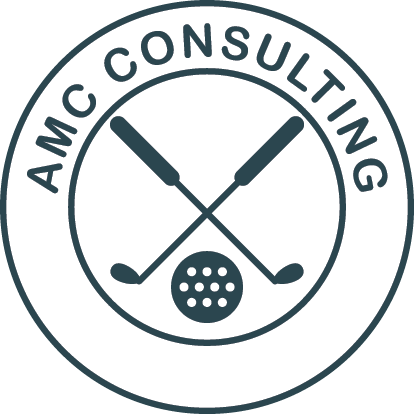Should your golf club streamline its committee?
Experienced golf club manager Adrian Cooper argues that having boards with too many people on them holds many golf clubs back.
Does three hours to discuss the length of a sock sound familiar?
Large committees, in some cases as large as 17, are slow, hard work and more often than not unproductive. They start at 7pm but don’t finish because one of the committee members throws in a hand grenade at 9pm that means the dinner will be cold and you will be there until after 11pm.

Large committees are reactive and take an age to make decisions; if a club wants to be taken seriously in this modern, dynamic business world, it needs to change and change quick as members now have so many golf club options if they’re not happy. Moving clubs has never been so easy.
How do you make change happen?
The key words here are engagement and transparency.
Set out a clear business case around why the committee would perform better with five or six people and engage with the members through focus groups, for example, focus groups should consist of the following, but not limited, to this list:
- Senior section
- Ladies’ section
- Past captains ladies and gents
- Past presidents or chairmen
- General membership.
These focus groups should meet when the sections play, for example ladies’ day on a Tuesday – get them together at 2pm on the afternoon and make the general membership on a Saturday afternoon and one evening.
The best way to communicate this is via a PowerPoint presentation – and give out handouts of the presentation after the focus group (otherwise there will be a distraction while you are trying to engage the group). This is an opportunity to see what your members think and take on board comments and suggestions and amend if you feel necessary. Be very clear what the roles will entail and how they will work within the operation.

Too many cooks?
As well as this display the new structure on exhibition boards in the clubhouse to let the members see what’s being suggested; remember a large number of members will not turn up for these focus groups so you need to get the message out. Also use the website and email.
All the suggestions and comments need to be circulated to all of the members at the end of all the focus group sessions so members can be reassured you have not dismissed their input. This can be done through your website or a simple email to your members – whichever has the best route of communication.
One of the most important points to raise here is changes may need to be made to your Articles of Association to reflect the new business structure. This may also require you to hold an AGM to get the decision voted through. I have found that this is the first time for a long time a club would have looked closely at their articles so it would be prudent to form a small group of members from all facets of the club. Review your articles from top to bottom to make sure they reflect how your club operates today and how you would like it to look for the future.
So, going back to the committee, it’s important the new structure reflects how the club will operate now, and in the future, and these are my suggestions:
- Chairman / president (chair) and casting vote
- Course director
- Golf and social director
- Finance director
- Health and safety director
- General manager / secretary.
Each role would require a formal application with an explanation as to why they would be the right person for the job. You will notice that I have not included club captain (male or female) on the board as my preference is to leave the captain to enjoy the role of being the club ambassador and not to be burdened with club politics – they would be best suited to engaging with the golf and social committee.

I’ve used director but some clubs may just substitute this for a committee member. Each director or committee member can form their own subcommittee away from the main committee or board and put together a group of members of their choice, calling upon the expertise within the club, if required. It’s the result of these sub committee meetings that the chair of that forum will bring to the main committee meeting or board meeting.
This is no easy task and could take up 12 months to roll out so be prepared for the long haul! And good luck.

Adrian Cooper
Adrian Cooper is the former manager of a number of golf clubs, including Harborne, Henley, Hinkley and Drayton Park. He now runs AMC Consulting and can be contacted on 07568 262101 or email adrian@amcconsulting.org.uk.















Interesting article and a subject that should have been addressed since some time in my opinion. I ran a members club for 10 years where there were 12 Members on the General Committee, each with their own area of responsibility and sub-committees – meaning I had to organise and attend approx. 13 committee meetings per month, all starting well after 18:00. Now, it is clear to me that these people give up their free time and I applaud them but the upshot was however, I had to give up ca. 3 evenings a week with a serious impact on my actual working time (invites, presentations, agendas, minutes etc). Surely in this day and age a more streamlined/time efficient method could be envisioned in order to save everybodys precious time….indeed this was one of the reasons why I left the golf industry after 30 years and became a project manager where my personal time management skills amongst others, were appreciated. Building your strategy on everybody’s goodwill is a model that will not last for ever!
It’s all about getting the right balance of people but ultimately it’s about having the right people, with the right skill sets to fulfil specific roles on the Board/Committee.
Also, ensure there’s an empowered chair who can lead the meeting in a business like fashion. I don’t know many businesses that change their CEO every year but many Golf Clubs change their “Chair” annually which doesn’t promote a sustainable business.
I agree that too many people on a committee can hold back progress however I think it’s more that having the same TYPE of people on the committee that stunts progress.
I firmly believe that having the same time of person on any decision making committee will never produce the most optimal outcome for the majority.
Great article.. Thanks for sharing.
A good article and I certainly agree with the methods of getting different sections of the club on board with change. I often get asked what is the best management structure for a club to adopt but the common theme I have seen within golf clubs is that it’s not the structure but more the people within it.
If you have 12 willing volunteers who don’t have their own agenda and work in the best interests of the club then that is far better than a 6 person board who are their to protect their own interests and nothing else.
Whatever the structure or the numbers within a committee a club requires clearly defined standards and expectations of what each role entails and for the other members of the committee/board to hold their colleagues to those responsibilities and standards.